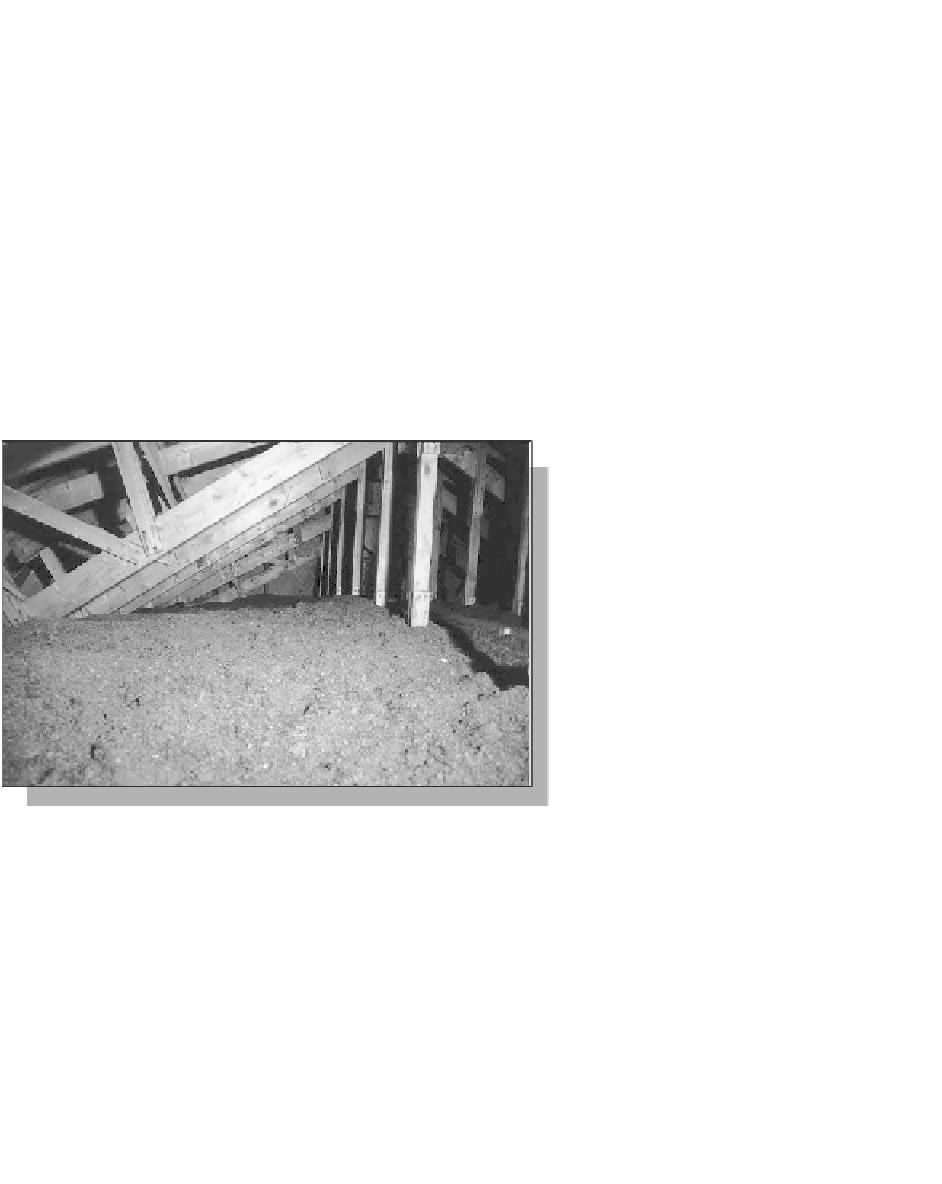Civil Engineering Reference
In-Depth Information
A peat-bog can contain many different sorts of moss, but this does not matter
as far as insulation quality is concerned. Moss can be used as a sealing material
between logs, for example, and for sealing joints between doors, windows and
the building fabric.
There is very little risk of insect and fungus attack in dry peat, as long as it is
not built into a damp construction. Peat has small quantities of natural impreg-
nating toxins such as alcohol. It also has a low pH value (3.5-4), so it retards the
spread of bacteria and protects against fungus. In certain products, however, it is
still advisable to use impregnation.
Peat natural blocks
Peat consisting of moss can be collected from the bog as blocks and used as ther-
mal insulation. It is dried and easily trimmed by sawing for building in walls. In
framework and brick cavity walls
the peat is built up with lime mortar
in the joints. The acids in peat will
attack the usual cement mortar, but
this method can be used with sul-
phur concrete (see 'Sulphur con-
crete', p. 196).
Peat loose fibres
Peat fibres can be used as loose
thermal insulation in floor con-
struction and walls and is made
from dried, ground peat with a little
lime added, about 5 per cent. This is
blown into the structure the same
way as cellulose insulation.
Figure 14.18: Suspended ceiling insulated with compressed peat
fibre constructed in Sweden in 1993.
As late as the 1950s in Scandinavia
it was usual to insulate simple fac-
tory buildings with peat in empty
concrete sacks. The leaves of the wall are built up on either side of the 'sack-wall'.
Internal lining is superfluous. The sacks make sure that the organic acids in the
peat do not come into contact with the concrete before it has set. Peat placed in
the wall in this way is liable to settle (see Figure 14.19).
Peat as external waterproofing
A special form of denser bogpeat, rose-peat, has been used a great deal as the sealing mate-
rial in dams. It is probably suitable as a moisture barrier for foundation walls. Its sealing ability is
due to the fact that it can absorb and hold large quantities of water.

